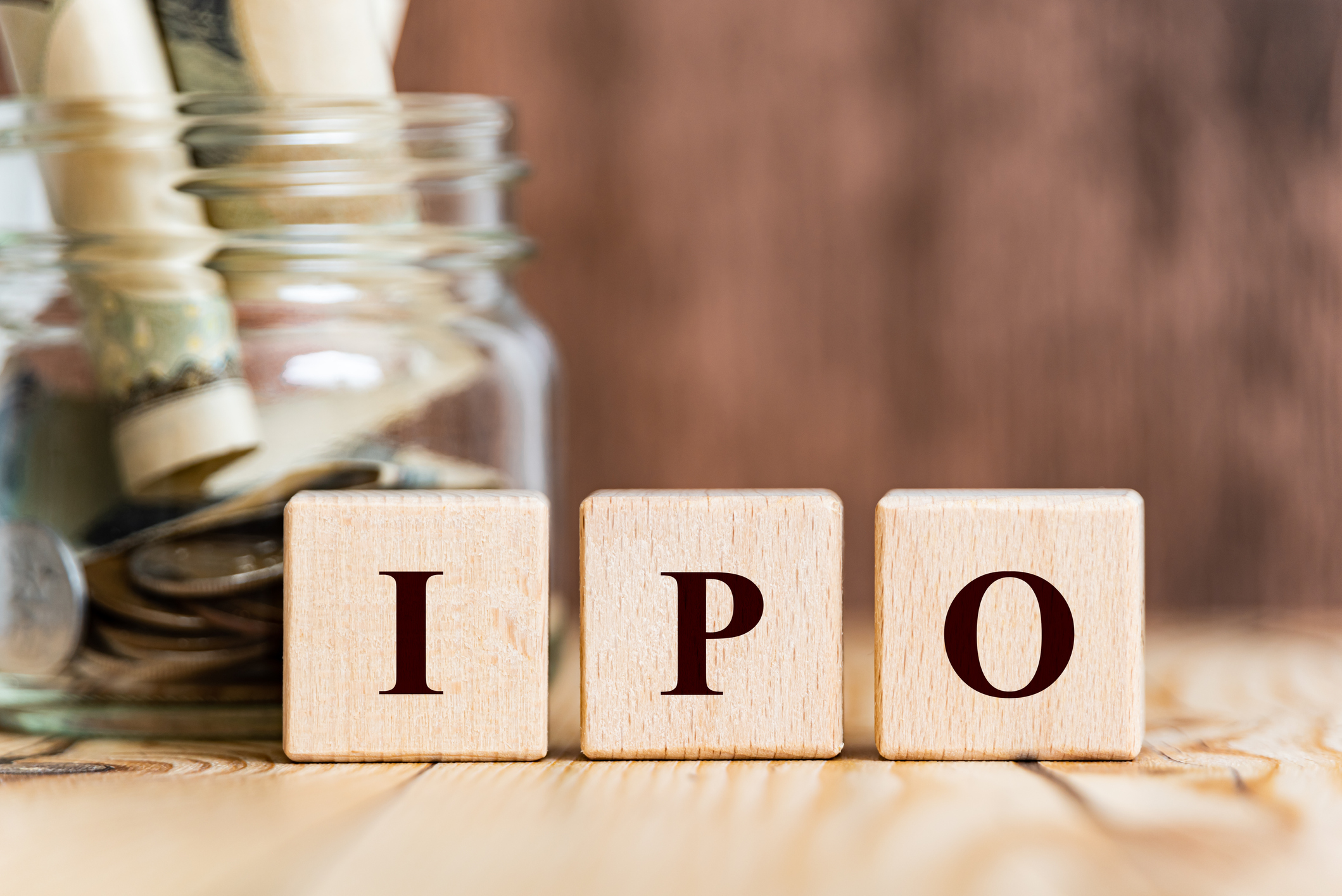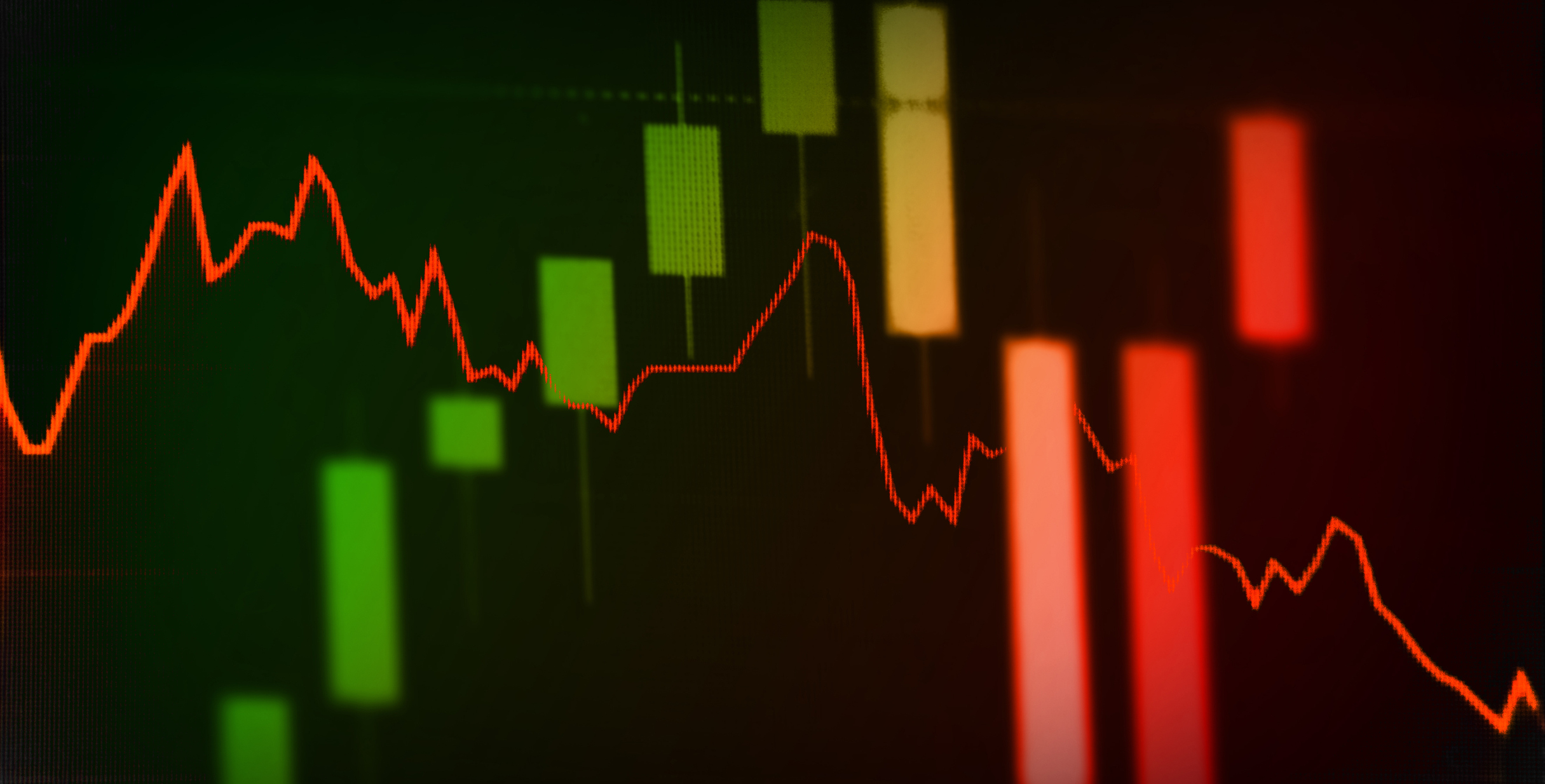Should You Invest In IPOs? It's Still A Risky Prospect
Investing in IPOs may sound exciting, but it's often better to wait for newly public stocks to mature before buying.

Do you let hope triumph over experience in your love life? Go for it. But in your investment portfolio? That's where you need to harden your heart. Nowhere is the conflict between hope and experience starker than the market for initial public offerings, or IPOs.
The possibility of getting in on the ground floor of a young company is enticing. And for some of the lucky few who are given allotments of shares at the official starting price, a first-day IPO "pop" in share prices can create instant profits.
Adding to the excitement: 2023 has been great for recent IPOs. The Renaissance IPO exchange-traded fund (ETF), which tracks new listings of stocks that have raised at least $100 million over the past three years, has returned 29% so far this year, compared with 13% for the S&P 500 Index. (Prices, returns and other data are as of September 30 unless otherwise noted.)

Sign up for Kiplinger’s Free E-Newsletters
Profit and prosper with the best of expert advice on investing, taxes, retirement, personal finance and more - straight to your e-mail.
Profit and prosper with the best of expert advice - straight to your e-mail.
The rout in tech stocks suppressed IPO activity in 2022, when just 65 deals raised less than $10 billion overall, says Josef Schuster, founder of IPOX Schuster, a financial services firm specializing in IPOs. That was down from 365 deals in 2021 that collected $134 billion from investors. Through the first nine months of 2023, a total of 76 IPOs have already gathered almost $15 billion from investors. And Schuster expects the rebound to continue through 2024. Among the firms that have hinted at upcoming IPOs: artificial intelligence company Databricks, veggie burger maker Impossible Foods and financial technology company Stripe.
IPOs have a poor long-term track record for investors
IPOs continue to generate buzz despite their poor long-term track record for investors, making it important for new investors to understand what an IPO is. Between the start of 1980 and year-end 2022, the majority of IPOs lost money over the three- and five-year periods following their debut – even for investors lucky enough to buy at the official offering price, according to an analysis by University of Florida finance professor Jay Ritter. Regular investors did worse.
Despite blockbusters such as electric-vehicle icon Tesla (TSLA) and vaccine-maker Moderna (MRNA), the average IPO stock bought at the publicly available closing price on its first trading day returned about 6% annualized over three years. An index of all U.S.-listed stocks returned about 11% annualized over the same period, Ritter reports.
The currently high-flying Renaissance ETF notched a 15.1% average annual loss over the past three years and returned an annualized 1.2% over the past five years, compared with the S&P 500's average annual returns of 10.2% and 9.9% over the same periods.
Be cautious when investing in IPOs
For investors who can tolerate the risk, it's okay to add a smidgen – though only a smidgen – of IPOs to your portfolio now, says Brian Duncanson, a fee-only financial adviser in Vero Beach, Florida. Bear in mind that for every Tesla, there is at least one WeWork (WEWKQ), which is down 99% since its 2021 debut and recently filed for Chapter 11 bankruptcy protection. "If an IPO is going to be a loser, you only want to lose a little. If it is going to be a winner, you only need a little," says Duncanson.
IPOs can provide some diversification from the mega-size companies dominating the S&P 500, says IPOX's Schuster. And as the IPO market recovers from the 2022 plunge, the stocks launching now are more likely to be "high quality and well vetted," he adds. An example, he says, is 249-year-old footwear maker Birkenstock (BIRK), which went public this fall, with more than $200 million in profits on $1.3 billion in sales in 2022.
IPO veterans say that any foray into the notoriously volatile sector should be made carefully. But investors can improve their odds by carefully considering what – and when – to buy.
First, pay attention to the way a firm goes public. In a traditional IPO, a company hires a Wall Street brokerage to help it complete paperwork, choose a starting price and drum up support among investors. Another common method of going public has been worse for investors: Hundreds of companies have merged with "special purpose acquisition companies" (SPACs), which are shell companies that have already sold shares to the public. But according to Ritter, from the start of 2012 through year-end 2022, the average SPAC has traded for less than half its first-day closing price as a newly merged company at the following one-year and three-year marks.
You'll also want to make sure the company is selling enough shares to allow for smooth trading. When the shares available to trade, or the "float," equal less than about 10% of the company's total number of shares, history shows that the stock tends to be more volatile, Schuster says.
It's safer to focus on bigger deals and larger companies, says Ritter. Very small IPOs – which he defines as those that raise less than $30 million – tend to "shoot up the first day, then almost immediately collapse," he says. And look for significant revenues. Going back as far as the start of 1980 through 2022, IPOs of companies with more than $100 million in annual sales had a cumulative three-year return of more than 36%, Ritter found, while companies with revenues below that cutoff returned less than 8%.
Because buying a share of stock is essentially buying a share of profits, it shouldn't be a surprise that purchasing stock in money-losing companies is, on average, a money-losing proposition. Share prices of profitable companies were about 30% higher than their first-day closing price three years after launch, Ritter's 2012–22 data shows.
Be choosy about industries. "Biotechnology IPOs are like buying a lottery ticket. They may turn out to be the next Moderna, but the track record is not very good," says Ritter. Gratifying choices in less-glitzy industries include grocery chain Albertsons (ACI), whose stock price has more than doubled since its June 2020 IPO.
Timing is key. Patience is a necessary virtue for IPO investors. Those who buy on the first day typically pay a premium and then watch the stock plunge over the next several months. A better opportunity often arises when many IPOs suffer another price drop when insiders are allowed to start selling their shares (typically three to six months after the first day of public trading).
Duncanson suggests making a list of IPOs you're interested in and waiting at least six months to see how the stock and the business perform. Then, if you're still interested, set a reasonable price target. IPOs are "the cutting edge of business. But the failure percentage is so high. Wait out at least two quarterly reporting cycles to see if they have overhyped and underdelivered," he says, adding that tech-sector IPOs, in particular, have been plagued by "irrational pricing."
Two recent IPOs to watch
If you have a little mad money that you can afford to risk on IPOs, and you can wait for the company and its stock price to mature, analysts suggest keeping an eye on two recent IPOs. The first is ARM Holdings (ARM, $54). This British semiconductor developer launched on Nasdaq in mid-September.
Sara Russo, a technology industry analyst for investment firm Bernstein, notes that ARM is large and profitable. It's on pace to rack up about $2.7 billion in sales and more than 50 cents a share in profits in 2023, according to company estimates, says Russo. ARM stock opened at $51 a share, jumped to more than $63 within minutes and over the next two weeks dropped back to the low $50s. That's still too expensive and risky, in Russo's view. She'll consider the shares a better deal if by April ARM delivers on promises to make more inroads into the booming artificial intelligence market and if the stock drops to about $46 a share.
CAVA Group (CAVA, $31), the rapidly growing Mediterranean restaurant chain, went public in mid June and "has a clear path to profitability," says Jordan Stuart, spokesman for the Federated Hermes Kaufmann Small Cap Fund, which bought shares at the initial offering price. The fast-casual chain offers "Mediterranean bowls with Chipotle speed," he says.
The company, on track to report more than $700 million in sales in 2023, is opening an average of about one new restaurant each week. Six of the nine analysts following the stock are currently bullish. Morgan Stanley restaurant analyst Brian Harbour is more in the neutral camp with an Equal Weight (Hold) rating. He has set a 12-month price target for the stock of $45 a share, implying a 45% gain from recent levels, but suggests that investors watch closely to see how the firm handles its rapid growth over the next year. "With experience, it's hard to have a Panglossian view of any restaurant IPO early on," he warns.
Instead of taking a flier on a single stock, you can spread your bets by buying an IPO-heavy fund. Be forewarned: Although diversifying your bets is a good move, the returns of IPO funds reflect the volatility and generally lackluster recent returns of the sector.
More than 40% of the portfolio of the aforementioned Federated Hermes Kaufmann Small Cap Fund (FKASX, expense ratio 1.36%) consists of stocks bought at their IPO. Despite getting the low initial offering prices, the actively managed fund, with $4 billion in assets, ranks in the bottom 60% of small-company growth funds so far this year, as well as in 2021 and 2022, according to fund tracker Morningstar. Strong gains from 2015 through 2020 give it a category-beating annualized 10-year return of 10.3%, however.
Neither of the two largest IPO index ETFs gets access to low initial offering prices. The largest IPO fund, with more than $700 million in assets, is the First Trust US Equity Opportunities ETF (FPX, 0.61%). The fund follows an index of 100 of the largest and most liquid IPOs, spinoffs and SPACs launched over the past four years. Losses in some of its largest holdings – including Airbnb (ABNB), down about 5% from its first-day close in December 2020 – have weighed on recent returns. The fund notched a 7.1% gain so far this year but lost an annualized 4.1% over the past three years.
The Renaissance IPO ETF (IPO, 0.60%), with $188 million in assets, is more concentrated, with only about 70 stocks. It has been volatile; before this year's strong gains it plunged 57% in 2022, when the S&P 500 index lost only 18%. The fund has ranked in the top half of mid-cap growth funds in three of nine calendar years, as well as so far this year; it ranked in the bottom half in six of nine years.
Note: This item first appeared in Kiplinger's Personal Finance Magazine, a monthly, trustworthy source of advice and guidance. Subscribe to help you make more money and keep more of the money you make here.
Related content
Get Kiplinger Today newsletter — free
Profit and prosper with the best of Kiplinger's advice on investing, taxes, retirement, personal finance and much more. Delivered daily. Enter your email in the box and click Sign Me Up.

Kim Clark is a veteran financial journalist who has worked at Fortune, U.S News & World Report and Money magazines. She was part of a team that won a Gerald Loeb award for coverage of elder finances, and she won the Education Writers Association's top magazine investigative prize for exposing insurance agents who used false claims about college financial aid to sell policies. As a Kiplinger Fellow at Ohio State University, she studied delivery of digital news and information. Most recently, she worked as a deputy director of the Education Writers Association, leading the training of higher education journalists around the country. She is also a prize-winning gardener, and in her spare time, picks up litter.
-
 Stock Market Today: Stocks Gain on Tech, Auto Tariff Talk
Stock Market Today: Stocks Gain on Tech, Auto Tariff TalkThe Trump administration said late Friday that it will temporarily halt tariffs on some Chinese tech imports.
By Karee Venema
-
 Sam's Club Plans Aggressive Expansion: Discover Its New Locations
Sam's Club Plans Aggressive Expansion: Discover Its New LocationsSam's Club expansion plans will open up to 15 new stores each year. Learn where they plan to open in 2025.
By Sean Jackson
-
 Stock Market Today: Tariff Talks Drive Another Up-and-Down Day
Stock Market Today: Tariff Talks Drive Another Up-and-Down DayTrade war negotiations are happening, but the "fear gauge" is gyrating, and investors, traders and speculators are still searching for signs of a bottom.
By David Dittman
-
 Stock Market Today: Dow Drops Another 2,231 Points to Hit a Correction
Stock Market Today: Dow Drops Another 2,231 Points to Hit a CorrectionThe Nasdaq Composite, meanwhile, entered a new bear market with its latest slide.
By Karee Venema
-
 Stock Market Today: Dow Dives 1,679 Points on Trump Tariff Shock
Stock Market Today: Dow Dives 1,679 Points on Trump Tariff ShockU.S. stocks lost roughly $3.1 trillion in market cap on Thursday – the biggest one-day decline since the start of the COVID-19 pandemic in March 2020.
By Karee Venema
-
 The Stock Market Is Selling Off. Here's What Investors Should Do
The Stock Market Is Selling Off. Here's What Investors Should DoInvestors started fleeing the equities market en masse in response to the Trump administration's "jaw-dropping" tariffs. But the experts say don't panic.
By Karee Venema
-
 Stock Market Today: It's the Old Up-Down Again on Liberation Day
Stock Market Today: It's the Old Up-Down Again on Liberation DayMarkets look forward to what comes with the reordering of 80-year-old global trade relationships.
By David Dittman
-
 Can a New Manager Cure Vanguard Health Care Fund?
Can a New Manager Cure Vanguard Health Care Fund?Vanguard Health Care Fund has assets of $40.5 billion but has been ailing in recent years. With a new manager in charge, what's the prognosis?
By Nellie S. Huang
-
 Stock Market Today: Stocks Are Mixed Before Liberation Day
Stock Market Today: Stocks Are Mixed Before Liberation DayMarkets are getting into the freewheeling rhythm of a second Trump administration.
By David Dittman
-
 Stock Market Today: It's Going to Stay Choppy for Stocks
Stock Market Today: It's Going to Stay Choppy for StocksAuto-focus can show us a lot about uncertainty on the ground and in the stock market.
By David Dittman